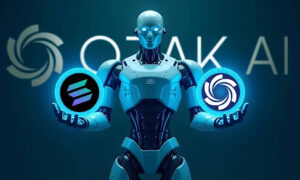A blockchain is a distributed database that keeps a continuously-growing list of records protected from revision and tampering. Basically, the blockchain technology is a public ledger that records all transactions that have ever occurred. The official blockchain public site lets any person to get these transactions in real time and evaluate the basic stats of the system, such as the time between blocks, a number of blocks made, mining costs, the cost per transaction and most fascinatingly even the electricity used to mine bitcoins.
In the bitcoin setting, a blockchain is a digital ledger, secured by cryptography so powerful that tampering with it is dismissed as “impossible”. Normally, the blockchain exists across a network of computers. When a new transaction is made, the blockchain is validated across the distributed network, before including the transaction as the next block on the chain.
The origin of blockchain sounds like the plot of an unbelievable thriller. It opens with a 9- page whitepaper published in 2008 by an anonymous scientist under the name of Satoshi Nakamoto. Satoshi’s work outlines in detail how to make a completely novel cryptocurrency based on a sophisticated mathematical formula and a resilient distributed architecture.
The Satoshi’s publication described how bitcoin can be used to send payments between two willing entities without requiring a third-party financial body. Each transaction was stored in the blockchain ledger, the latest block linked to the preceding ones using a digital signature. To make sure there is trust in the ledger, the network participants ran complex algorithms to authenticate those signatures and add transactions to the blockchain.
The blockchain technology allows strangers who don’t have faith on each other to exchange value in cyberspace. By 2014, over 80 uses of such cryptoledgers had been documented.
In 2014, “Blockchain 2.0” was a word used in the blockchain database field. In the same year, about eight funded projects were underway to develop blockchain 2.0 technology.
This year, the central securities depository of the Russian Federation announced a pilot project centred on blockchain technology. Many regulatory agencies in the music industry are testing models that use blockchain technology for management of copyrights and royalty collection around the world.
The Economist has described blockchain as “a programming language that allows users to write more sophisticated smart contracts, thus creating invoices that pay themselves when a shipment arrives or share certificates which automatically send their owners dividends if profits reach a certain level”.
A blockchain implementation comprises two types of records: blocks and blocks.
Blocks record transactions, and for each, the “transactions carried out are confirmed, cleared, and kept in a block which is connected to the previous block, thereby forming a chain. Every block should refer to the earlier block to be authentic. This structure perpetually time-stamps and keeps exchanges of value, precluding anyone from changing the ledger
In a block, a transaction’s presence confirms in what sequence and when it happened. Blocks are made by users referred to as “miners” who utilize specialized equipment or software designed precisely to come to agreement on which transactions fit in each block, and which block will turn out to be the next block of the developing chain.



































